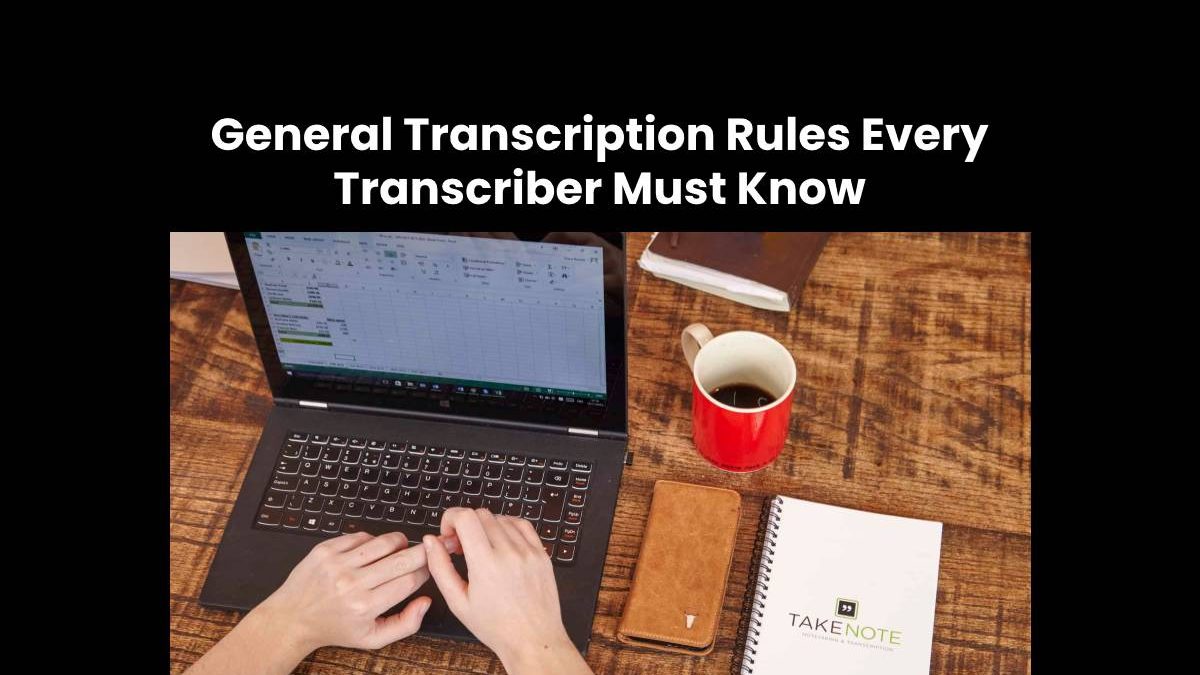Transcription is the process of converting audio or video files into text. Every category of transcription has its own set of guidelines. As a transcriber, your goal is to adhere to the approaches in order to convert any audio or video file into text successfully.
Table of Contents
The Unbreakable Rules of Transcribing
When it comes to transcribing, the transcriber is usually given a defined turnaround time in which they have to transcribe the audio and video file and submit it for further review. While text formats such as full verbatim or clean verbatim are crucial, there are specific rules that can boost your transcriber rating and help you keep getting more jobs. Here are 10 general transcription practices to always adhere to if you want to shine at your job.
Be Precise
Always transcribe the text as it sounds, and don’t assume if you’re unsure what the speaker is saying. Accurate transcription requires listening carefully to the audio at all times. The best way to ensure precision is by listening to the audio or video files in a quiet place that offers the least distractions possible.
Spell Correctly
Typing errors are a real sore eye for any editor. The simplest and best way to avoid spelling mistakes is to always proofread your material before hitting the submit button. The days of confusing the spellings of “your” and “you’re” are long over.
Note Alternate Spellings
Most transcribing companies use US English as the default transcription language. Most audio or video files you will work with will require you to master the rules of US English. This involves applying the ideal rules for capitalization, punctuation, and, of course, spelling. Spelling errors can easily creep in when you forget that certain American and British words are spelled differently.
Avoid Paraphrasing
As a transcriber, your goal should always be to avoid overthinking when converting audio into text. You want to stick to transcribing what you heard and not what you think you did. Transcription is about accuracy and completeness and not implementing brevity where it’s not required. As a transcriber, avoid attempting to correct grammatical errors made by the speakers unless the instructions say otherwise.
Assign Correct Speaker Labels
Transcribing audio files requires being alert to the different speakers in your audio or video file. This will ensure that the correct speech aligns with the right speaker. If you know the speakers’ names, you should label the dialogue accordingly.
Avoid Adding Additional Information
The general rule is that if a word is not part of the audio or video file, it’s considered additional information. Do not include your comments, page numbers, or job IDs in the transcript. If you have something to say, include it in the comment section for that particular job.
Understand Full and Clean Verbatim
Full verbatim means transcribing the audio or video exactly as it sounds. It includes all the utterances of the speakers. When it comes to clean verbatim, it excludes content such as speech errors, repetitions, filler words, and slang words.
Use the Right Number Formats
Some companies use different numbering formats for transcriptions. For example, professional transcribing providers impose a specific format for single-digit numbers, money, percentages, mathematical equations, and dates that might come up in the audio you’re transcribing.
Don’t Skip Inaudible and Unintelligible Audio
When it comes to audio or video transcribing, speakers might say words or language that you cannot make out. This type of audio falls under unintelligible or inaudible audio. Don’t ignore these instances; you must utilize the appropriate marking for these parts.
Human Transcription Works Best
Although bots can carry out transcription tasks, humans still offer the most accurate transcribing services. Automated transcription software might work well for clear, crisp audio. However, when you throw in accents, a noisy background, overlapping conversations, and industry jargon, a machine just doesn’t cut it.
Transcribing is a meticulous job. To succeed as a transcriber, you need to be able to furnish accurate work on every occasion. For example, legal audio transcription requires focus and attentiveness, not to mention an eye for detail. If you think you have what it takes to succeed as a transcriber, scan the internet for the most reliable transcribing companies and start earning!
Related posts
Sidebar
Recent Posts
An Inside Look Of Paraulogic
Introduction Welcome to the exciting world of Paraulogic! Are you ready to dive into a linguistic adventure and put your…
Empowering Artists with Cryptocurrency: A Guide to Selling Art Using NFTs
In the ever-evolving landscape of the art world, artists are constantly seeking innovative ways to showcase and monetize their creations….



